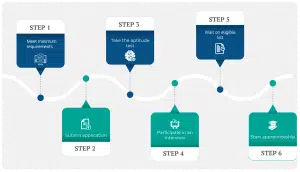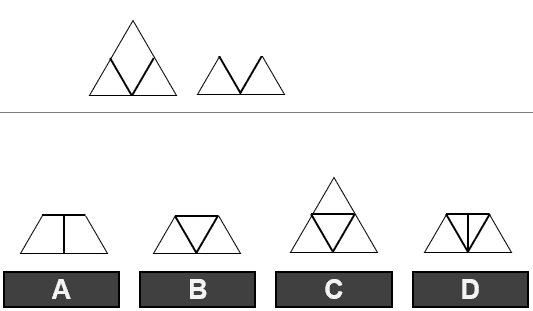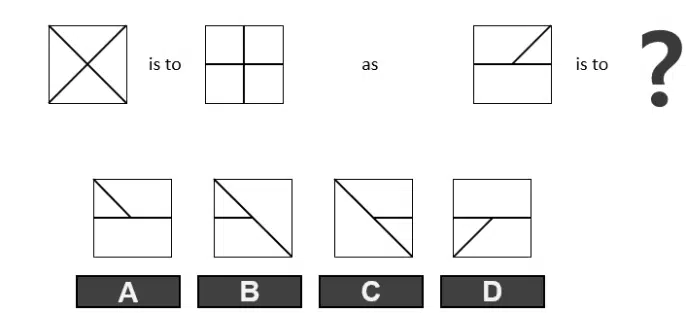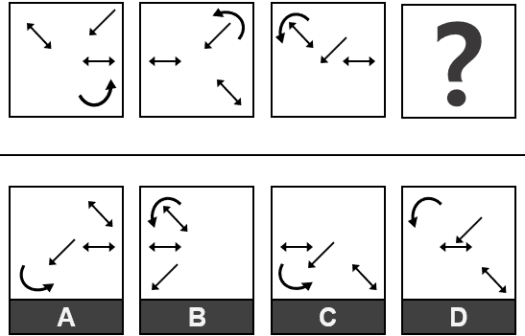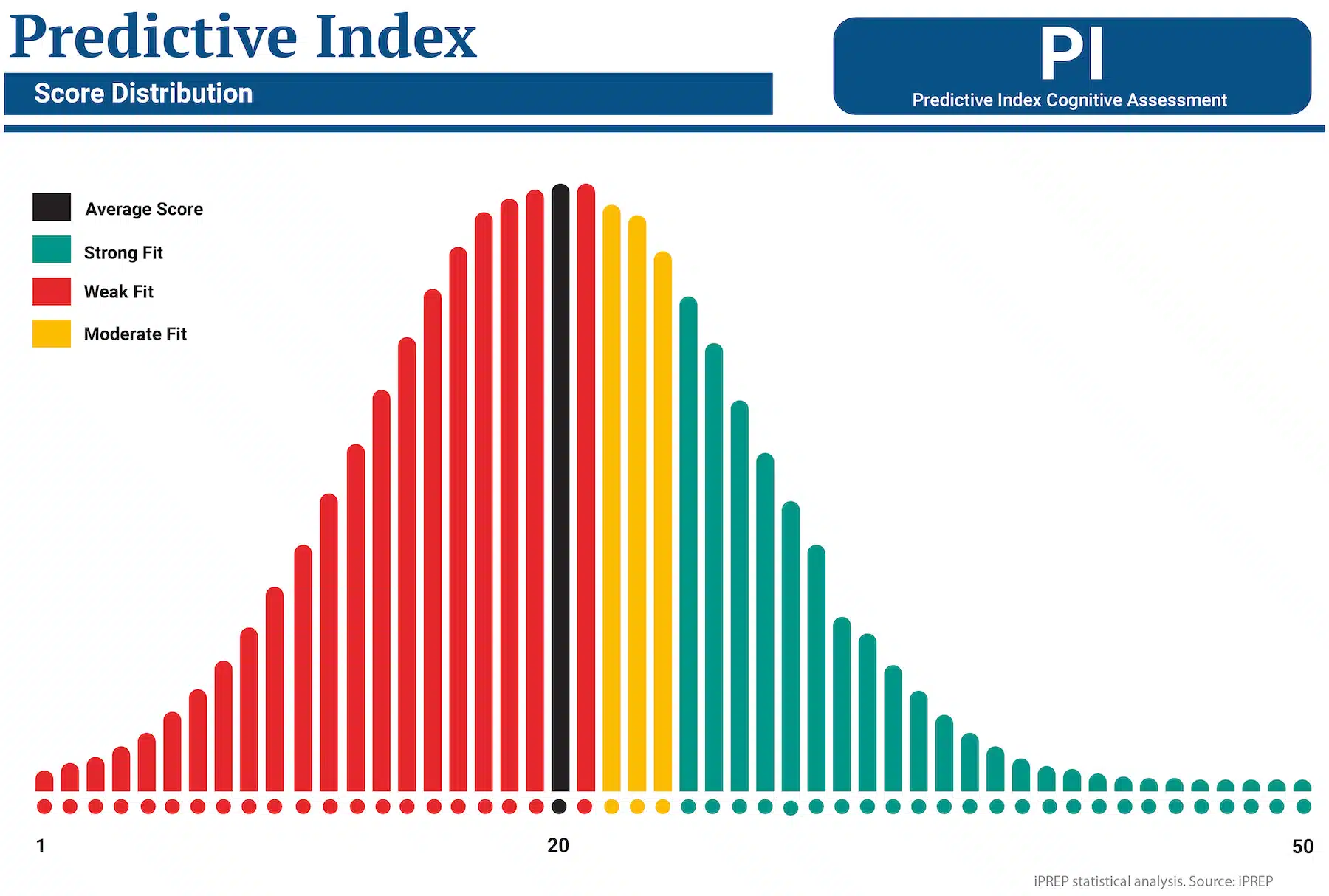The Predictive Index Behavioral & Cognitive Assessments are innovative tools designed to measure and analyze an individual’s cognitive abilities and behavioral traits. These assessments have become a cornerstone in modern human resources, with a reach that spans across various industries. Here’s what you need to know:
- Purpose: These assessments aim to predict an individual’s suitability for specific roles or positions by understanding how a person thinks, learns, and behaves. They are essential for ensuring the right job fit.
- Skills Measured: The Cognitive Assessment focuses on general cognitive ability, including numerical, verbal, and abstract reasoning. In contrast, the Behavioral Assessment analyzes personality traits and behavioral patterns to predict workplace behavior.
- Format: The Cognitive Assessment comprises 50 questions to be answered in 12 minutes, while the Behavioral Assessment consists of a free-choice questionnaire with no time limit.
- Validity: Backed by over 500 validity studies across 20 industries, these assessments are scientifically proven and fully compliant with EEOC and OFCCP guidelines.
- Facts & Figures: With a presence in over 8,000 companies worldwide and availability in more than 70 languages, these assessments play a crucial role in hiring, talent optimization, team building, and leadership development.
The Predictive Index Assessments are more than just tests; they are strategic tools that provide actionable insights. With a strong scientific foundation and a proven track record, they offer a unique perspective into human potential and performance.
Understanding and leveraging these assessments can lead to informed decisions that align with individual and organizational goals and values. Whether you’re a job seeker looking to highlight your abilities or an employer aiming to build a cohesive team, the Predictive Index Assessments offer a tailored solution to meet your needs.
Did you know?
The Predictive Index Assessments test your thinking speed and what drives you. There’s no simple right or wrong; it’s about how well your abilities align with the job. Doing well often means understanding the role and how you fit into the company’s culture. Taken online, these tests are not just about getting the job; they can also give you insights into your strengths and how you work with others. Preparing for the test means understanding yourself as much as understanding the questions.
PI Assessment Types Explained
The Predictive Index offers two distinct assessments that together provide a comprehensive understanding of a candidate’s cognitive abilities and behavioral traits. These assessments are designed to reveal how a person thinks, learns, and is likely to behave in a work environment. They are not traditional tests with right or wrong answers but rather tools to uncover individual strengths, preferences, and alignment with specific roles.
In this section, we will explore both the Cognitive and Behavioral Assessments, providing an overview of what they measure and what you, as a future test-taker, need to know to perform well on each. Understanding these assessments is not just about preparation; it’s about gaining insights into your unique abilities and how they can be leveraged in your professional life.
1. Predictive Index Cognitive Assessment
- What It Measures: The Cognitive Assessment evaluates your ability to think quickly, solve problems, and grasp new information. It includes questions related to numerical, verbal, and abstract reasoning.
- How to Perform Well: Success in this assessment requires sharp analytical skills and the ability to recognize patterns and connections. Practicing problem-solving exercises and familiarizing yourself with different types of reasoning questions can enhance your performance.
2. Predictive Index Behavioral Assessment
- What It Measures: The Behavioral Assessment analyzes your natural drives and needs, uncovering how you are most likely to behave in a work environment. It’s not about right or wrong answers but understanding your unique behavioral preferences.
- How to Perform Well: Being authentic and self-aware is key to performing well in this assessment. Reflect on your past experiences, understand your motivations, and respond honestly. There’s no need to tailor your answers to what you think the employer wants; your genuine responses will provide the most accurate and beneficial insights.
Both assessments offer valuable insights into your cognitive abilities and behavioral traits, helping employers understand how you fit within a specific role or team. While the Cognitive Assessment may require more traditional preparation and practice, the Behavioral Assessment emphasizes self-awareness and authenticity.
This table provides a concise overview of the two types of assessments within the Predictive Index framework, including what they measure, how to perform well, the number of questions, and the time allocated for each. It’s a handy reference for future test-takers to understand the key aspects of both assessments.
| Assessment Type | What It Measures | How to Perform Well | Number of Questions | Time |
|---|---|---|---|---|
| PI Cognitive Assessment | Evaluates thinking speed, problem-solving, numerical, verbal, and abstract reasoning | Practice analytical skills, problem-solving exercises, and pattern recognition | 50 | 12 minutes |
| PI Behavioral Assessment | Analyzes natural drives and needs, understanding behavior in a work environment | Be authentic and self-aware, reflect on motivations, respond honestly without tailoring answers | Free-choice questionnaire | No time limit |
These assessments are not just about securing a job but understanding yourself better and how you can contribute effectively in various professional settings. In the following sections, we’ll delve deeper into each assessment, providing a comprehensive guide to help you prepare and succeed.
PI Cognitive Assessment: Question Types
The Predictive Index Cognitive Assessment is designed to measure an individual’s general cognitive ability, and it includes various types of questions that assess different aspects of cognitive functioning. Here’s an overview of the different types of questions and the skills necessary to perform well on each:
1. Numerical Reasoning Questions
- What It Assesses: These questions evaluate your ability to work with numbers, including basic arithmetic, numerical sequences, and mathematical problem-solving.
- Skills Needed: Arithmetic skills, understanding of mathematical principles, ability to identify patterns in numbers.
2. Verbal Reasoning Questions
- What It Assesses: Verbal reasoning questions test your understanding of language, including vocabulary, grammar, and the ability to comprehend and interpret written information.
- Skills Needed: Strong vocabulary, reading comprehension, ability to analyze and interpret textual information.
3. Abstract Reasoning Questions
- What It Assesses: These questions assess your ability to identify patterns, relationships, and logical rules in abstract information, often using shapes and symbols.
- Skills Needed: Spatial awareness, logical thinking, ability to recognize patterns and relationships in abstract data.
4. Non-Verbal Reasoning Questions
- What It Assesses: Non-verbal reasoning questions evaluate your ability to interpret and analyze visual information, such as diagrams, charts, and graphs.
- Skills Needed: Visual perception, ability to interpret graphical data, understanding of spatial relationships.
5. Logical Reasoning Questions
- What It Assesses: Logical reasoning questions test your ability to think critically and analytically, drawing logical conclusions from given information.
- Skills Needed: Critical thinking, analytical skills, ability to apply logic to solve problems.
The Predictive Index Cognitive Assessment is a fast-paced test, with 50 questions to be answered in 12 minutes. It requires a combination of numerical, verbal, abstract, non-verbal, and logical reasoning skills. Preparing for each type of question and understanding what they assess will help you perform well on the assessment.
This table provides a concise reference for future test-takers to understand the key aspects of the different question types within the Cognitive Assessment.
| Question Type | What It Assesses | Skills Needed |
|---|---|---|
| Numerical Reasoning | Ability to work with numbers, arithmetic, numerical sequences, mathematical problem-solving | Arithmetic skills, understanding of mathematical principles, pattern recognition |
| Verbal Reasoning | Understanding of language, vocabulary, grammar, comprehension, and interpretation of text | Strong vocabulary, reading comprehension, analysis and interpretation of text |
| Abstract Reasoning | Identification of patterns, relationships, logical rules in abstract information using shapes/symbols | Spatial awareness, logical thinking, pattern and relationship recognition in abstract data |
| Non-Verbal Reasoning | Interpretation and analysis of visual information, diagrams, charts, graphs | Visual perception, interpretation of graphical data, understanding of spatial relationships |
| Logical Reasoning | Critical and analytical thinking, drawing logical conclusions from given information | Critical thinking, analytical skills, application of logic to solve problems |
By focusing on these areas and practicing similar questions, you can enhance your ability to respond accurately and efficiently, showcasing your cognitive abilities to potential employers.
Example Question: Numerical Reasoning
If a car travels at a constant speed of 60 miles per hour, how far will it travel in 2.5 hours?
A) 120 miles
B) 150 miles
C) 180 miles
D) 200 miles
PI Behavioral Assessment: PI Factors
The Predictive Index (PI) Behavioral Assessment is a quick, online test that helps understand your personality in the workplace. It takes about six minutes and asks you two main questions. The first question is about how you think others expect you to act, and the second is about how you really see yourself. By looking at both, the test gets a clear picture of how you’re likely to behave at work.
The questions are linked to five key areas: Dominance, Extraversion, Patience, Formality, and Objectivity. These areas help figure out your preferred ways of working and making decisions. Your results are then used to see how well you might fit into different roles and teams.
Whether you’re taking the test for a job application or to understand yourself better, the PI Behavioral Assessment offers valuable insights into what makes you unique in the workplace.
A. Dominance:
- Assesses: The degree to which an individual seeks to control their environment.
- Overview: This factor measures how assertive, competitive, and independent an individual is. People with high dominance tend to take charge, make decisions, and are often seen as leaders. Those with low dominance may prefer collaboration and following others’ lead.
B. Extraversion:
- Assesses: The degree to which an individual seeks social interaction.
- Overview: This factor gauges how outgoing, persuasive, and socially active a person is. High extraversion indicates a preference for teamwork, social engagement, and communication, while low extraversion may indicate a preference for solitary work and introspection.
C. Patience:
- Assesses: The degree to which an individual seeks consistency and stability.
- Overview: Patience measures how tolerant, steady, and consistent a person is. Those with high patience often prefer routine and stability, while those with low patience may seek change, variety, and fast-paced environments.
D. Formality:
- Assesses: The degree to which an individual seeks to conform to formal rules.
- Overview: Formality assesses how meticulous, systematic, and rule-abiding a person is. High formality indicates a preference for structure, precision, and following guidelines, while low formality may indicate flexibility and adaptability.
E. Objectivity (secondary factor):
- Assesses: The degree to which an individual relies on objectivity in decision-making.
- Overview: Objectivity measures how logical, analytical, and objective a person is in their decision-making. Those with high objectivity rely on facts and data, while those with low objectivity may rely more on intuition and feelings.
This table provides a concise reference for understanding the key aspects of the different PI Factors within the Behavioral Assessment:
| PI Factor | Description | Application in Workplace |
|---|---|---|
| Dominance | Measures the desire to control the environment and influence others. | Identifies leadership styles, decision-making preferences, and assertiveness. |
| Extraversion | Assesses the extent of social interaction and outgoing nature. | Reveals communication styles, teamwork preferences, and social engagement. |
| Patience | Evaluates the preference for consistency, stability, and routine. | Helps understand response to change, stress management, and approach to long-term tasks. |
| Formality | Analyzes the tendency to conform to rules, structure, and precision. | Indicates attention to detail, adherence to guidelines, and quality standards. |
| Objectivity | Assesses reliance on objectivity in decision-making, modifying the expression of primary factors. | Shapes understanding of decision-making styles, analytical thinking, and logical approach. |
In summary, the Predictive Index (PI) Behavioral Assessment is a vital tool that uncovers the unique behavioral drives and decision-making styles that define how individuals operate in the workplace. Through its focus on five key factors—Dominance, Extraversion, Patience, Formality, and Objectivity—this assessment offers a nuanced understanding of an individual’s preferences and tendencies. Whether for hiring, coaching, or personal development, the insights gained from this assessment enable a more aligned and effective approach to talent management. It’s not just about fitting into a role; it’s about recognizing and leveraging what makes each person unique.
I have a friend in HR and we all took the test, it [The Behavioral Assessment] outlines what motivates you and gives direction on what type of job could be a fit. It does not score if you’d perform well or poorly at a job, more how your personal battery and motivators fit a role. It’s a 2 question test.
A bunch of us took it and compared answers, it was spot on. I’ve taken a bunch of these throughout my career and this always stuck with me.
Source: provisionalhitting3/reddit
Preparation Strategies
Preparing for the Predictive Index Behavioral & Cognitive Assessments is not just about brushing up on skills; it’s about understanding yourself and how you approach problems. While the Behavioral Assessment explores your natural tendencies, the Cognitive Assessment examines your ability to reason and solve problems. Both require a unique approach to preparation. Here’s a definitive guide to help you prepare for these assessments, focusing on strategies that have proven effective over time.
1. Understand the Assessments
- Behavioral: Familiarize yourself with the five PI Factors. Reflect on your behavior in different situations.
- Cognitive: Understand the types of questions, including numerical, verbal, and abstract reasoning.
2. Practice Mindfulness for the Behavioral Assessment
- Be honest and authentic. This test is about understanding your natural tendencies, not what you think others want to see.
3. Sharpen Your Cognitive Skills
- Practice numerical, verbal, and logical reasoning questions.
- Focus on improving speed and accuracy.
4. Take Practice Tests for the Cognitive Assessment
- Simulate test conditions to build confidence.
- Analyze your mistakes and learn from them.
5. Develop a Study Schedule
- Plan your preparation over several weeks.
- Include regular breaks to avoid burnout.
6. Read Widely for the Verbal Reasoning Section
- Enhance your vocabulary and comprehension skills by reading diverse materials.
7. Engage in Critical Thinking Exercises
- Solve puzzles, play strategic games, and engage in activities that challenge your logical thinking.
8. Seek Feedback if Possible
- If you know someone who has taken the test, ask for insights and advice.
9. Mind Your Well-being
- Ensure proper sleep, nutrition, and relaxation. Your mental and physical well-being are crucial for optimal performance.
Preparing for the Predictive Index Assessments is a journey of self-discovery and skill enhancement. While the Behavioral Assessment requires introspection and authenticity, the Cognitive Assessment demands practice and analytical prowess. Remember, these assessments are not about right or wrong but understanding your fit and potential. Approach them with curiosity and confidence, and you’ll not only succeed but also gain valuable insights into yourself. Trust in your abilities, follow this guide, and you’ll be well-prepared to face these unique assessments.
I had to take this for a Data Science related position I am applying…let me write down some stuff for other prospective test-takers. You have to answer ALL 50 questions in 12 minutes. That is approximately 14s per question. So try to answer as many questions correctly as you can. Also, it is better to familiarize yourself with the 12 kind of questions that appear on this test…and PRACTICE!
Source: reddit user
PI Test Features
Purpose of the Assessments
The Predictive Index Behavioral & Cognitive Assessments serve distinct yet complementary purposes. The Behavioral Assessment aims to uncover an individual’s natural workplace behavior, while the Cognitive Assessment evaluates cognitive ability and problem-solving skills. Together, they provide a comprehensive understanding of a candidate’s fit for a particular role or team.
Format of the Assessments
- Behavioral Assessment: An untimed test that takes approximately six minutes, consisting of two questions followed by a list of adjectives.
- Cognitive Assessment: A timed test that lasts 12 minutes, comprising various question types, including numerical, verbal, and abstract reasoning.
Adaptive Nature
The Predictive Index Assessments are designed to adapt to various organizational needs and roles. They can be used across different stages of the employee lifecycle, from hiring to development and change management.
Integration with Talent Optimization
These assessments are integral to talent optimization strategies. They enable organizations to align their talent decisions with business strategies, fostering a more cohesive and productive work environment.
Accessibility and User Experience
The online format of the assessments ensures easy accessibility and a user-friendly experience. The clear instructions and intuitive design make the process smooth for test-takers.
Insights and Interpretation
The results of the assessments are presented graphically, providing clear insights into behavioral patterns and cognitive abilities. Trained practitioners interpret these patterns, utilizing the data for various organizational purposes, such as selection, coaching, and development.
Ethical Considerations
The Predictive Index Assessments are developed and maintained with modern psychometrics, ensuring fairness, validity, and reliability. They adhere to ethical guidelines and best practices in the field of psychological testing.
Common and Past Names of the PI Test:
The Predictive Index Behavioral & Cognitive Assessments are commonly referred to by various names. Here’s a list of some of the common names:
- Predictive Index (PI) Assessments
- PI Behavioral Assessment
- PI Cognitive Assessment
- Predictive Index Personality Test
- Predictive Index Cognitive Ability Test
- PI Learning Indicator (for the Cognitive Assessment)
- PI Job Assessment
iPREP: Concise. Focused. What you need.
Sign up
Immediate access
Practice
Online self-paced
Pass
Ace that Test!
Technical Facts
Fast Facts (tl;dr)
- Behavioral: Untimed, 6 minutes.
- Cognitive: Timed, 12 minutes.
- Cognitive: Multiple-choice, no penalty for wrong answers.
- Behavioral: Free-choice response.
- Available in multiple languages.
- Results: Trained interpretation (Behavioral); raw scores (Cognitive).
Development and Validation
The Predictive Index Assessments have been developed and validated through rigorous scientific research. They are designed to measure specific constructs related to workplace behavior and cognitive ability, ensuring accuracy and relevance.
Psychometric Properties
- Reliability: Both assessments demonstrate high reliability, ensuring consistent measurement across different contexts and populations.
- Validity: The assessments have been validated for various occupational and organizational purposes, confirming that they measure what they intend to measure.
Scoring Mechanism
- Behavioral Assessment: Scores are derived from the Self, Self-Concept, and Synthesis domains, reflecting different aspects of behavior.
- Cognitive Assessment: Scores are calculated based on the number of correct answers, with no penalty for incorrect answers.
Response Formats
- Behavioral Assessment: Utilizes a free-choice response format, where individuals select adjectives that describe them.
- Cognitive Assessment: Includes multiple-choice questions that assess numerical, verbal, and abstract reasoning.
Time Considerations
- Behavioral Assessment: Untimed, typically completed in six minutes.
- Cognitive Assessment: Timed, with a total duration of 12 minutes.
Language Availability
The assessments are available in multiple languages, accommodating diverse populations and global organizational needs.
Security and Compliance
The Predictive Index Assessments adhere to stringent security protocols and comply with relevant legal and regulatory standards, including GDPR.
Interpretation and Reporting
- Behavioral Assessment: Results are interpreted by trained practitioners and presented graphically.
- Cognitive Assessment: Results are provided as a raw score, often compared to a normative group to understand relative performance.
Application Across Various Industries
The Predictive Index Assessments are used across a wide range of industries and roles, demonstrating their flexibility and applicability in different organizational contexts.
We use Predictive Index [for our recruiting process]… With PI you build out profiles for a job role, people take the test and it helps determine if their personality/habits are a good match for the role, then it has a cognitive test to determine how quickly they learn. It’s a little expensive, and you really want to hire somebody to train/help you set up the initial profiles. But it does a really good job at filtering a large number of applications and identifying people that may not have the experience, but have an aptitude to be a good employee.
Source: HR Manager, Phlakvest/reddit
Results Scale and Interpretations
The Predictive Index Behavioral Assessment takes about six minutes and uses a free-choice response format. Results are based on three domains that reflect behavior, and trained practitioners interpret the patterns. These interpretations focus on understanding workplace behavior, including factors like Dominance and Extraversion.
The Predictive Index Cognitive Assessment is a 12-minute timed test with multiple-choice questions. It’s scored on correct answers, with no penalties for wrong ones. The results, given as a raw score, evaluate cognitive ability and problem-solving skills, showing how well a person might learn and adapt to a role.
Together, these assessments provide insights into a candidate’s fit for a role or team. The Behavioral Assessment explores natural tendencies, while the Cognitive Assessment measures reasoning skills. The combination helps in understanding an individual’s strengths and preferences, aiding in effective talent management.
PI Cognitive Assessment Scoring and Interpretation
The Predictive Index Cognitive Assessment is a robust tool designed to measure an individual’s cognitive ability and problem-solving skills. Understanding how the results are scored and interpreted is essential for both test-takers and employers. This section will delve into the various components of the score report, including the raw score, percentile ranking, sub-scores, score range, and other dimensions, providing a comprehensive understanding of what the scores mean and how they can be used to assess a candidate’s ability to perform.
Raw Score: The raw score is the total number of correct answers a candidate provides. Since there is no penalty for incorrect answers, the raw score ranges from 0 to 50, with 50 being the maximum possible score.
Percentile Ranking: The percentile ranking compares a candidate’s score to a normative group, showing how the individual performed relative to others. For example, a percentile ranking of 90 means the candidate scored higher than 90% of the comparison group.
Sub-Scores: Though the overall score is most commonly used, the Cognitive Assessment may also provide sub-scores in areas like numerical, verbal, and abstract reasoning. These can give more specific insights into a candidate’s strengths and weaknesses.
Score Range: The score range categorizes scores into different levels, often aligning with job complexity. For example:
- Below 20: Suitable for less complex roles.
- 20-29: Suitable for moderately complex roles.
- 30-39: Suitable for complex roles.
- 40 and above: Suitable for highly complex roles.
Other Score Dimensions: Some reports may include additional information, such as confidence intervals, which provide a range within which the true score likely falls.
Using the Score Report
The score report is a valuable tool for assessing a candidate’s ability to perform in a given role. By understanding the raw score, percentile ranking, and other dimensions, employers can gauge how well a candidate might learn, adapt, and handle the complexity of a position. The suggested score ranges can guide hiring decisions, aligning candidates with roles that match their cognitive abilities.
This table illustrates how the different aspects of scoring and interpretation might apply to a specific individual’s results on the Cognitive Assessment:
| Component | Description | Hypothetical Tester Example |
|---|---|---|
| Raw Score | Total number of correct answers | Scored 35 out of 50 |
| Percentile Ranking | Comparison to a normative group | 80th percentile: Higher than 80% of the group |
| Sub-Scores | Specific insights into numerical, verbal, and abstract reasoning | Numerical: 12, Verbal: 10, Abstract: 13 |
| Score Range | Categorizes scores into levels aligned with job complexity | Scored 35: Suitable for complex roles |
| Other Dimensions | Additional information like confidence intervals | Confidence Interval: 32-38 |
The Predictive Index Cognitive Assessment provides a multifaceted view of a candidate’s cognitive capabilities. From raw scores to percentile rankings and suggested score ranges, each aspect of the report contributes to a nuanced understanding of an individual’s potential. By interpreting these scores accurately, employers can make informed decisions that align talent with organizational needs, ensuring that candidates are placed in roles where they can truly excel.
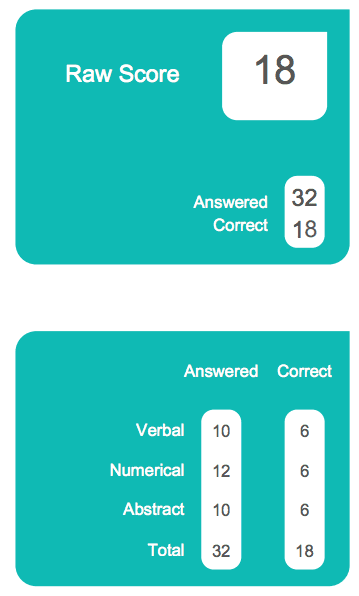
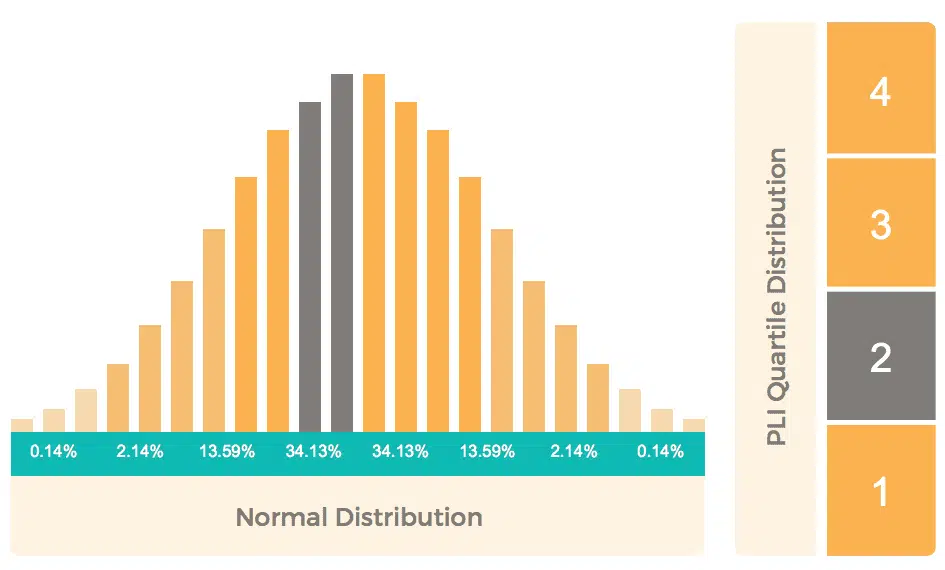
PI Behavioral Assessment Scoring and Interpretation
The Predictive Index Behavioral Assessment is a unique tool that uncovers an individual’s natural workplace behavior. Unlike traditional assessments, it focuses on understanding how a person naturally behaves in different work environments. This section will explore the various components of the score report, including the domains, factors, score ranges, and how they can be used to assess a candidate’s ability to perform in specific roles.
Domains
The Behavioral Assessment results are derived from three domains:
- Self: How individuals see themselves.
- Self-Concept: How individuals believe they are expected to behave.
- Synthesis: A combination of Self and Self-Concept, reflecting likely observed behavior in the workplace.
The Behavioral Assessment is scored across three domains. This table outlines these domains and their significance in interpreting an individual’s natural workplace behavior.
| Domain | Description |
|---|---|
| Self | Reflects how individuals see themselves |
| Self-Concept | Reflects how individuals believe they are expected to behave by others |
| Synthesis | Averages the Self and Self-Concept, reflecting likely observed behavior |
Factors
The assessment measures five factors:
- Dominance: The drive to exert influence over people or events.
- Extraversion: The drive for social interaction with other people.
- Patience: The drive to have consistency and stability.
- Formality: The drive to conform to rules and structure.
- Objectivity: A modifying factor describing decision-making style.
Score Ranges
Scores for each factor are presented on a scale from 1 to 10, with different ranges suggesting different behavioral tendencies. For example:
- Dominance: 1-3 (Low), 4-6 (Medium), 7-10 (High)
- Extraversion: 1-3 (Reserved), 4-6 (Sociable), 7-10 (Outgoing)
Using the Score Report
The score report is interpreted by trained practitioners who utilize the data for various purposes such as selection, coaching, and development. By understanding the scores in each domain and factor, employers can gauge how well a candidate’s natural behavior aligns with the requirements of a role. For example, a high score in Dominance might be suitable for leadership positions, while a high score in Patience might be ideal for roles requiring steady, consistent work.
This table provides a different perspective on how the PI Factors might manifest in various personality types:
| PI Factor | Leader | Team Player | Analyst | Description |
|---|---|---|---|---|
| Dominance | High | Low | Medium | Measures control and influence; high in leaders, low in collaborators. |
| Extraversion | High | Medium | Low | Assesses social interaction; high in outgoing leaders, low in independent analysts. |
| Patience | Low | High | Medium | Evaluates stability and routine; high in team players, low in assertive leaders. |
| Formality | Medium | Medium | High | Analyzes conformity to rules; high in detail-oriented analysts, medium in others. |
| Objectivity | High | Low | High | Assesses decision-making style; high in logical analysts and leaders, low in intuitive players. |
The Predictive Index Behavioral Assessment offers a profound insight into an individual’s natural drives and tendencies in the workplace. By interpreting the scores across domains and factors, organizations can align candidates with roles that truly fit their natural behavior. This alignment not only enhances performance but also contributes to job satisfaction and overall well-being. Whether you’re an individual seeking to understand your behavioral pattern or an employer aiming to optimize talent, this guide provides a comprehensive understanding of the scoring and interpretation of the Predictive Index Behavioral Assessment.
FAQs
The Predictive Index Assessments consist of two separate tests: the Behavioral Assessment, which uncovers natural workplace behavior, and the Cognitive Assessment, which measures cognitive ability and problem-solving skills.
The Behavioral Assessment is untimed and typically takes about six minutes, while the Cognitive Assessment is timed and lasts 12 minutes.
The Behavioral Assessment measures factors like Dominance, Extraversion, Patience, Formality, and Objectivity. The Cognitive Assessment evaluates numerical, verbal, and abstract reasoning skills.
The Behavioral Assessment is scored based on three domains and five factors, while the Cognitive Assessment is scored based on the number of correct answers, with no penalty for incorrect answers.
While the Behavioral Assessment is designed to capture natural tendencies and may not require preparation, you can practice for the Cognitive Assessment by familiarizing yourself with numerical, verbal, and abstract reasoning questions.
Employers use the results to understand a candidate’s fit for a particular role or team, aligning natural behavior and cognitive abilities with job requirements.
Feedback is typically provided by trained practitioners within the organization, who interpret the results and may discuss them with you during the hiring process.
There is no specific passing score, as the results are interpreted in the context of the role’s requirements and the organization’s needs.
Yes, the Predictive Index Assessments are available in multiple languages to accommodate diverse populations.
If you require accommodations, it’s advisable to communicate your needs to the employer or test administrator in advance to ensure appropriate arrangements are made.
Test Tips
Here are seven practical and effective test-taking tips for those about to take the Predictive Index Behavioral & Cognitive Assessments. These tips focus on test-day strategies and on-the-test guidance:
- Arrive Early and Stay Calm: Arriving early will give you time to settle in and reduce anxiety. Remember, the Behavioral Assessment is about your natural tendencies, so stay calm and be yourself.
- Read Instructions Carefully: Both assessments will have specific instructions. For the Cognitive Assessment, make sure you understand the question format and timing, as you only have 12 minutes.
- Don’t Overthink the Behavioral Assessment: Your first instinct is often the most accurate reflection of your natural behavior. Don’t spend too much time analyzing; respond naturally.
- Manage Your Time on the Cognitive Assessment: With only 12 minutes, time management is crucial. If a question seems too challenging, move on and return to it if time permits.
- Use the Process of Elimination in the Cognitive Assessment: If you’re unsure about an answer, eliminate the options you know are incorrect. This strategy can increase your chances of selecting the correct answer.
- Remember, There’s No Penalty for Wrong Answers in the Cognitive Assessment: Don’t leave any questions unanswered. Since there’s no penalty for incorrect answers, it’s better to guess if you’re unsure.
- Ask for Clarification if Needed: If anything is unclear, don’t hesitate to ask the test administrator for clarification. Whether it’s about the test procedure or the environment, make sure you’re comfortable before starting.
These tips are designed to guide you through the test day, helping you navigate the unique aspects of the Predictive Index Behavioral & Cognitive Assessments. Approach the Behavioral Assessment with authenticity and the Cognitive Assessment with focus and strategy. Your natural behavior and cognitive abilities are what these assessments seek to uncover, so trust yourself and do your best.
Administration
- Test Location: The assessments are typically administered online and can be taken at a location specified by the employer or remotely, depending on the organization’s preferences.
- Test Schedule: The schedule is usually determined by the employer or hiring organization. Candidates will be informed of the date and time in advance.
- Test Format: Both assessments are computerized. The Behavioral Assessment uses a free-choice response format, while the Cognitive Assessment consists of multiple-choice questions.
- Test Materials: Since the tests are computerized, pen and paper are generally not required. However, it’s advisable to check with the test administrator for any specific requirements or allowances.
- Cost: The cost of the assessments is typically covered by the employer or hiring organization. Candidates are usually not required to pay for taking the tests.
- Retake Policy: The retake policy may vary by organization. Some may allow retakes, while others may have specific guidelines or restrictions. It’s essential to inquire about the retake policy with the test administrator or employer.
Test Provider
The Predictive Index (PI) is a talent optimization platform founded in 1955, with a mission to align business strategy with people strategy. PI offers scientifically-validated assessments designed to understand workplace behavior and cognitive abilities. With a presence in over 140 countries, their tools are widely used across various industries, helping organizations make data-driven decisions in hiring, team building, and leadership development.
Among their top products, the Predictive Index Behavioral Assessment and Cognitive Assessment stand out. The Behavioral Assessment uncovers natural workplace tendencies, while the Cognitive Assessment measures cognitive ability and problem-solving skills. Together, these assessments provide comprehensive insights into an individual’s fit for specific roles, contributing to more effective talent management and organizational success.
Information Sources
Disclaimer – All the information and prep materials on iPREP are genuine and were created for tutoring purposes. iPREP is not affiliated with the Predictive Index Company, which is the owner of the Predictive Index (PI) Cognitive Assessment.

